Oegosan Onggi Village (외고산옹기마을)
0m 30666 2020-08-24
36, Oegosan 3-gil, Ulju-gun, Ulsan
+82-52-237-7894
Oegosan Onggi Village was established when earthenware master Heo Deok-man settled in the area in 1975. The village today showcases a massive collection of various earthenware products, which creates a unique sight. Over 50% of the country's earthenware products are crafted at this village. The village also features several attractions for visitors to enjoy, such as the Ulsan Onggi Museum, which houses the largest earthenware pottery recognized by the Guinness Book of World Records; and the annual Ulsan Onggi Festival, with many diverse activity programs.
Onggigol Ceramics (옹기골도예)
99.4545434745321m 0 2023-10-20
18 Oegosan-gil, Ulju-gun, Ulsan
Onggi Ceramics is the workshop of Heo Jin-gyu, a master onggi craftsman, and is located in Onggi Village in Ulsan, home to the largest production of onggi in the nation. Visitors can browse the items as well as purchase anything that piques their interest. The workshop also offers a range of exerience programs related to onggi, although advanced reservations are required to participate.
Ulsan Onggi Festival (울산옹기축제)
248.5322014862543m 20326 2024-04-25
36 Oegosan 3-gil, Onyang-eup, Ulju-gun, Ulsan
+82-52-980-2232~6
Ulsan Onggi Festival takes place within Oegosan Onggi Village, the largest onggi (traditional Korean pottery) village in the nation, home to seven master artisans. The festival serves to promote this local product while providing visitors with the chance to learn more about onggi through various programs and hands-on experiences.
Cheoyongam (처용암)
7.2 Km 10974 2020-02-05
Hwangseong-dong, Nam-gu, Ulsan
+82-52-229-6350
Cheoyongam is a very small rocky island sitting in the middle of Gaeunpo Inlet in front of Saejuk Village in Hwangseong-dong, Nam-gu, Ulsan.
It is a historic islet related to the famous folktale of Cheoyong. The tale is about a dragon that emerged from the east sea along with his seven sons at the end of the Silla Kingdom (57BC - 935AD). One of the dragon’s sons named Cheoyong came to the capital and married a beautiful woman. One night, he found an evil spirit trying to attack his wife so he sang and danced, whereupon the spirit presented itself and kneeled in apology. Since then, people have used the image of Cheoyong to dispel evil spirits.
The dance that Cheoyong is said to have performed has been titled Cheoyongmu and has been designated as an Important Intangible Cultural Property. Cheoyongam is the sacred rock where the dragon in the tale is said to have appeared. There are many attractions nearby including Mokdo Island (Natural Monument No. 65), which offers magnificent lush greenery all year round.
Seosaengpo Waeseong Fortress (서생포왜성)
7.3 Km 18833 2020-02-05
Seosaeng-ri, Seosaeng-myeon, Ulju-gun, Ulsan-si
+82-52-204-0324
Seosaengpo Waeseong Fortress
(Seosaengpo Japanese Fortress) is a stone fortress typical
of the Japanese style popular in the later part of the 16th century. It was built under the leadership of Japanese General Kato Kiyomasa in
1592-1593 at the beginning of the Imjinwaeran War (Japanese invasion, 1592-1598). The main fortress is located on a mountaintop 200 meters above
sea level, a second fortress is halfway down the mountain, and a third fortress is
located at the bottom of the mountain. The whole fortress is rectangular shaped. The fortress wall is 6 meters high and slants at an angle of 15 degrees.
In 1594, a Buddhist monk named Samyeong-daesa came to Seosaengpo Waeseong Fortress four times to negotiate for peace, but he failed each time. In 1598, the fortress was taken over
by Korea with the assistance of General Magwi of the Ming dynasty. A year later, Changpyodang Shrine was built in honor of 53 Koreans
who died during battles against the Japanese invading forces. However, the shrine was destroyed during the Japanese imperialism period and no
trace of it remains. It is possible to tell from Seosaengpo Jinseongdo (a map drawn up in 1872) that the fortress was also partially used by Korean forces.
Busan Cheokpanam Hermitage (척판암 (부산))
8.0 Km 15540 2020-04-11
490-156, Jangan-ro, Gijang-gun, Busan
Cheokpanam Hermitage was initially built in 673 by a monk named Wonhyo, whose legend is still passed down, and was restored in 1938 by another monk named Gyeongheo. Nestled inside the forest on Bulgwangsan Mountain, the hermitage offers a splendid view of the its surroundings. It is located nearby Jangansa Temple, also built by Monk Wonhyo.
Jinha Beach (진하 해수욕장)
8.0 Km 63058 2023-12-22
Jinhari, Seosaeng-myeon, Ulju-gun, Ulsan
+82-52-204-0351~4
Jinha Beach, located in Jinha-ri, Ulju-gun, in the southern part of Ulsan, is the best beach in Ulsan. Follow the National Highway 31, which runs close to the coast, and Ganjeolgot Lighthouse will come into view with Jinha Beach spreading out beyond. Jinha Beach has a relaxing atmosphere and gentle waves due to its geographical location situated to the north from the East Sea’s raging ocean currents. The 1-kilometer-long beach extends over 40 meters in x_width and can accommodate over 50,000 people per day, making it full of vacationers from all over the country.
It is a great place to visit with family as it has beautiful islands, pine forests, and shallow waters. In addition, Jinha Beach is regarded to have the cleanest water in Korea and it’s only 20 minutes’ drive away from Ulsan and 40 minutes from Busan. The area around the beach and Ganjeolgot Lighthouse is also a popular fishing spot, so there is a constant flow of tourists on weekends throughout the year.
Also near Jinha Beach is Myeongseongyo Bridge, a popular night attraction in Ulsan The lights on the bridge and nearby streets are bright and beautiful at night, decorating the night sea.
(Credit: Ulju Tourism website)
Lotte Mart [Tax Refund Shop] (롯데마트)
10.3 Km 0 2024-04-23
34, Samho 1-gil, Yangsan-si, Gyeongsangnam-do
-
Ulsan Grand Park Rose Festival (울산대공원 장미축제)
10.6 Km 23693 2024-04-17
377, Nambusunhwando-ro, Nam-gu, Ulsan
+82-52-229-3341
Ulsan Grand Park Rose Festival has on exhibit about 3 million roses in a vast rose garden. The festival offers diverse views of beautiful roses along with dynamic performances and participation events.
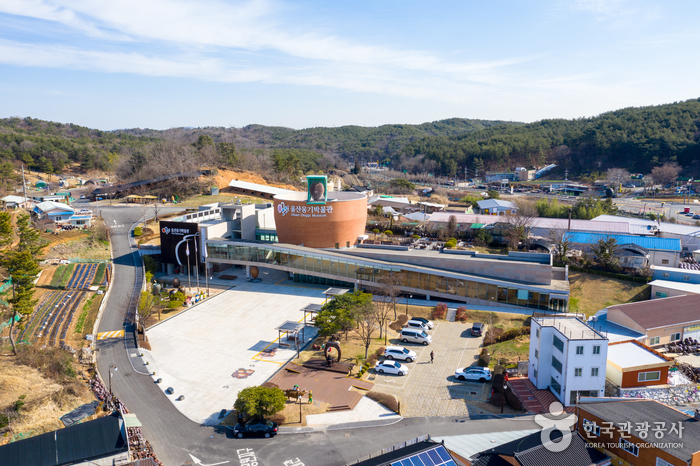

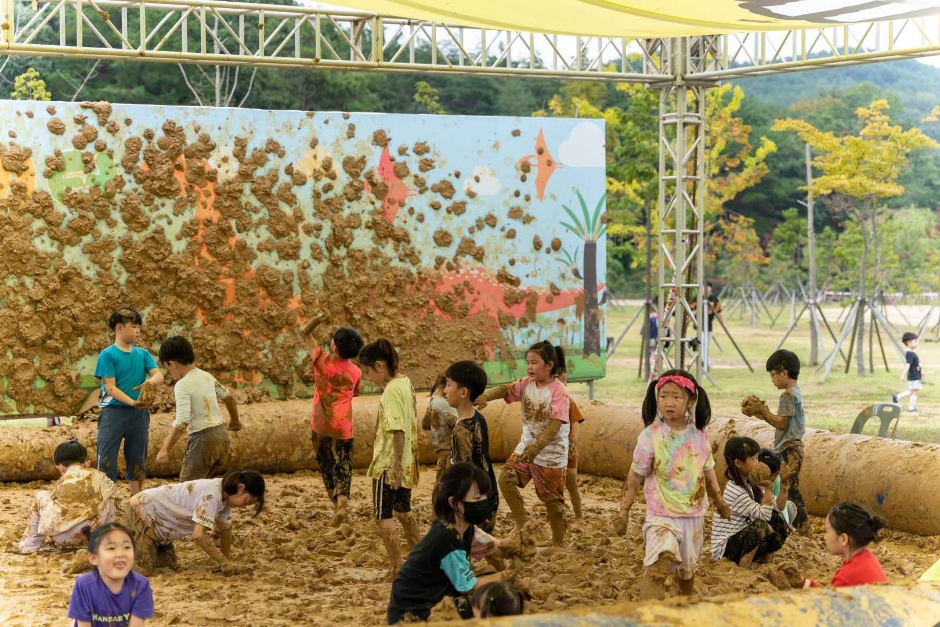
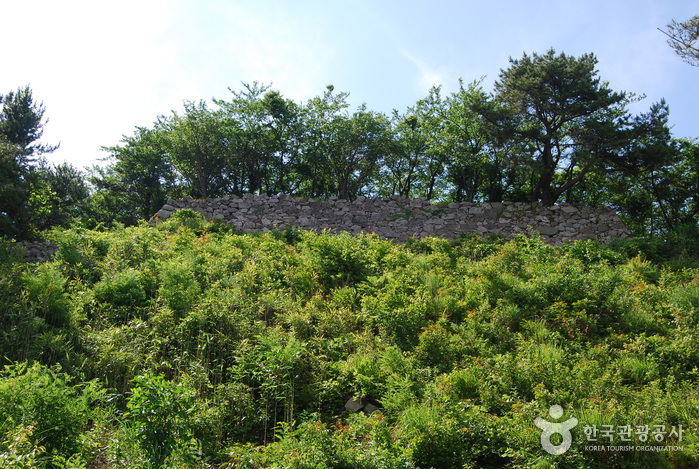
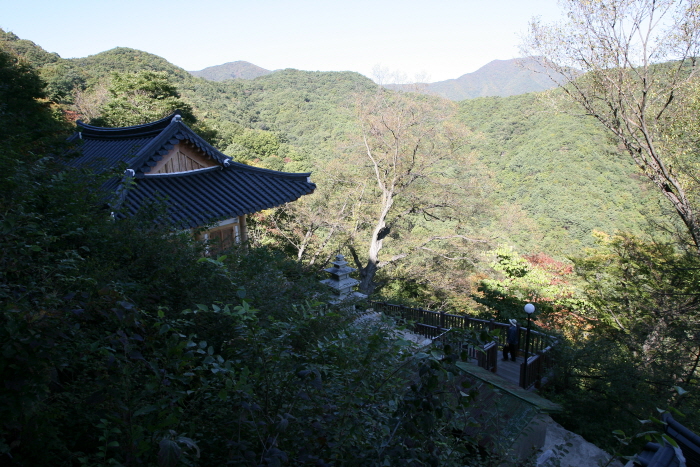
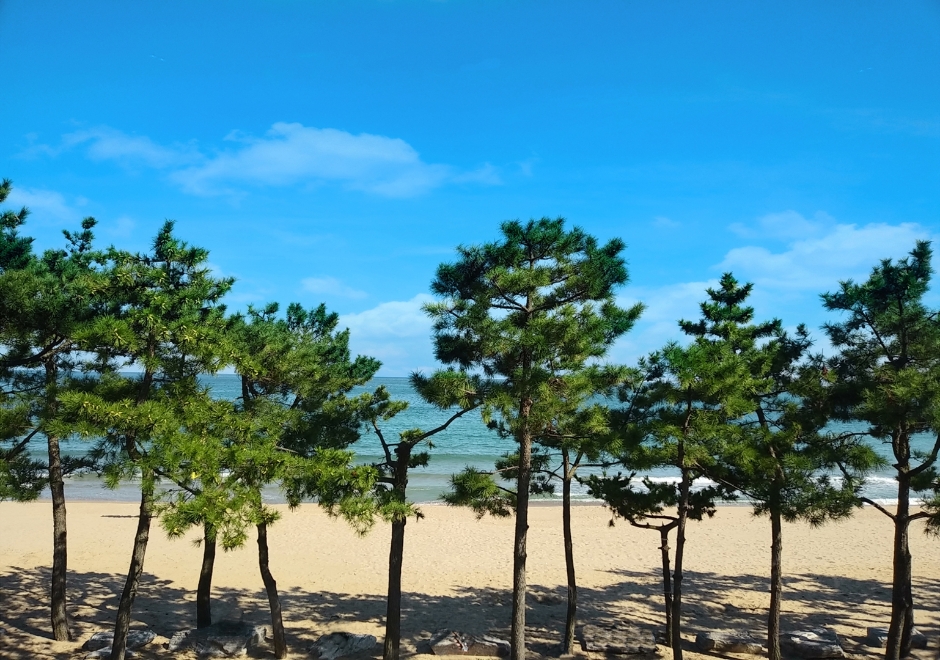
![Lotte Mart [Tax Refund Shop] (롯데마트)](http://tong.visitkorea.or.kr/cms/resource/29/2891029_image2_1.jpg)
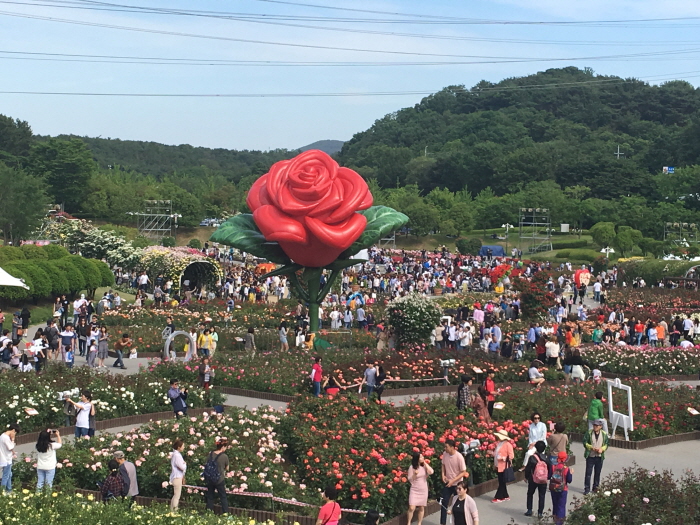
 English
English
 한국어
한국어 日本語
日本語 中文(简体)
中文(简体) Deutsch
Deutsch Français
Français Español
Español Русский
Русский